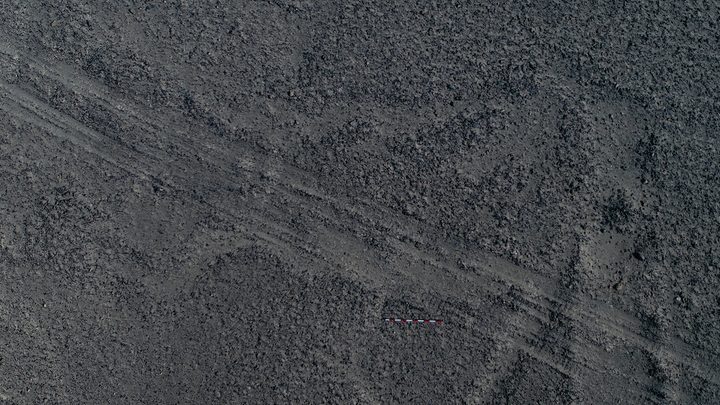Researchers have used artificial intelligence (AI) to uncover four new ancient symbols hidden in the Nazca desert in Peru. The geoglyphs, which are often massive and can reach up to 1,200 feet long, were previously invisible from the ground but were detected by the AI system.
The Nazca Lines, a UNESCO World Heritage Site in the arid Peruvian desert, has long been a source of fascination and speculation. This ancient geoglyphs site, renowned for its large-scale animal, plant, and geometric symbols, has often been linked to extraterrestrial theories due to its enigmatic nature.
The Enigmatic Symbols and Alien Theories
Geoglyphs are often massive, with previously discovered Nazca Lines reaching up to 1,200 feet long, which makes them virtually impossible to detect when on the ground. Archeologists first uncovered the Peruvian geoglyphs nearly 100 years ago after the advent of planes when pilots spotted the shapes from the air. Despite the intrigue, the consensus among most historians and archaeologists is that these symbols were created by the ancient Nazca culture between 500 BC and 500 AD.

In a remarkable breakthrough, researchers with Yamagata University Institute of Nasca and IBM Japan used a deep learning AI model to uncover hidden ancient symbols in this mysterious desert. This discovery, made possible by cutting-edge AI technology, adds a new layer to our understanding of the Nazca Lines.
Up until recently, archeologists and researchers would examine aerial photos of the area with just their naked eyes to try to find new geoglyphs. According to the Yamagata researchers, this method “requires a substantial amount of time, posing a challenge in efficiency and scalability.”
The Role of AI in the Discovery
The AI model, trained on recognizing patterns and shapes, analyzed aerial and satellite images of the area to detect these previously unseen symbols. The researchers uncovered four new geoglyphs that depict a “humanoid” figure holding what appears to be a club, one that depicts a fish, another showing a bird, and one that appears to show a pair of legs. By sifting through large amounts of data at a scale beyond human capabilities, the AI was able to spot patterns that had remained hidden to human eyes for centuries. Utilizing AI paid off for the Yamagata team, as the tech was able to work 21 times faster compared to when just humans analyzed such photos. “We could identify new geoglyph’s candidates approximately 21 times faster than with the naked eye alone,” the researchers said.

The discovery of these new symbols has significant implications for our understanding of the Nazca culture and its history. As experts interpret these symbols, we may gain fresh insights into the Nazca people’s beliefs, rituals, and ways of life.
More to Follow
Looking ahead, we can expect AI to play a bigger role in archaeological investigations. Following the success of integrating AI into archaeological research, the Yamagata researchers will now team up with the IBM T. J. Watson Research Center, based out of New York, to expand their research to the entire region where the lines were discovered.
“In addition, we plan to work with the Ministry of Culture of Peru to implement activities aimed at protecting the geoglyphs discovered using AI,” the researchers said.

AI systems trained to detect patterns on land using satellite and sonar images have already proven fruitful for other archaeologists, with AI detecting a Mesopotamian burial site in 2021 based on satellite images and another AI system detecting shipwrecks with 92% accuracy. This clearly shows the potential of AI not only in speeding up research but also in uncovering historical and archaeological secrets that might otherwise remain hidden.




